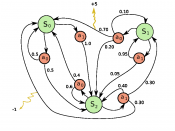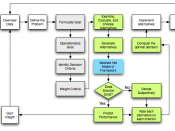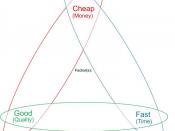Everyone makes decisions everyday. The decisions made can be very small such as what to wear on a particular day to large, life changing decisions such as moving to another city. Weather one acknowledges it or not the fact remains that decisions are a necessary part of everyday life for adults. The decisions required daily affect both personal and professional situations. Both decisions for personal and professional life require the same basic steps without the thinker realizing the processes used.
To better understand and evaluate the decision making process, several decision making models have been developed. These models can range from four to nine steps, depending on the decision and the person using the model. Harmes lists seven steps on his Genetic Decision Making Model (1994) that is somewhat similar to Bazerman's model. For example purposes this paper will examine how Bazerman (2002) uses a six-step approach. The first step is to identify the problem.
Second, Bazerman advises the classification of the criteria or the needs for the situation. The third step instructs the user to rank the criteria in order of preference. The best definition of Steps 4 and 5 come from Bazerman the author of this model:
The fourth step in the decision-making process requires identification of possible courses of action. Decision makers often spend an inappropriate amount of search time seeking alternatives, creating a barrier to effective decision making. An optimal search continues only until the cost of the search outweighs the value of the added information. Step five, rate each alternative on each criterion. How well will each of the alternative solutions achieve of the defined criteria? This is often the most difficult stage of the decision-making process, as it typically requires us to forecast future events. The rational decision maker will be able to assess...


